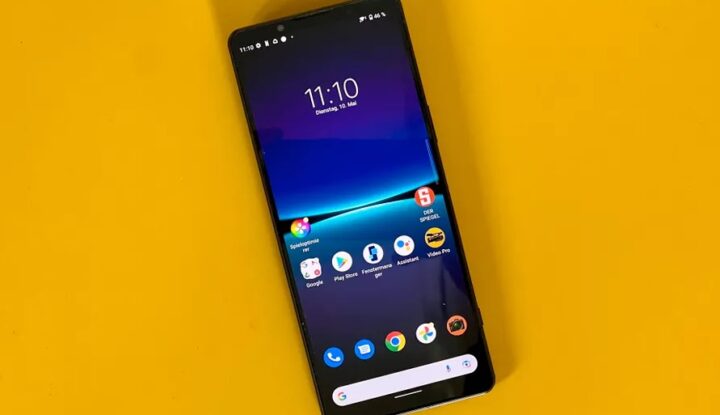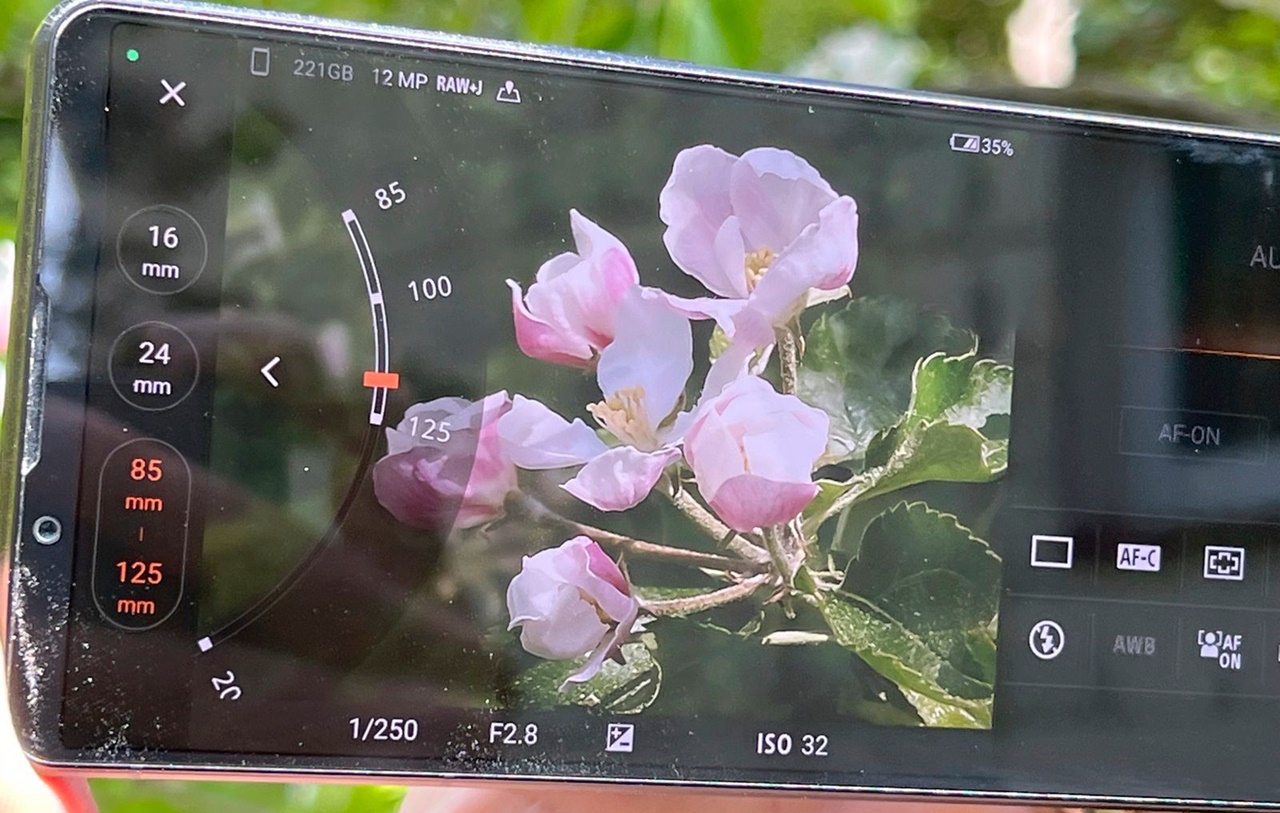
Sony Xperia 1 IV in the test: Zoom in
As with a system camera, the lenses of Sony’s latest smartphone are shifted in order to optically bring subjects closer. Is it worth paying a four-digit sum for such a device?
With smartphones, there have previously been two ways to zoom closer to a lens when taking a picture. On the one hand there is the digital zoom, in which an image section is enlarged electronically. With Google’s Pixel phones, for example, this works quite well as long as you don’t overdo it. Sooner or later, however, the images will become pixelated with this method because the software calculates pixels where it expects them to be, not where the camera captured them.
For some years now, some smartphones have therefore also been equipped with a telephoto camera. It has a fixed focal length, around 77 millimeters on the iPhone 13 Pro. The reason why the manufacturers then speak of a zoom can be explained by the fact that they combine the images from the main camera with those from the telephoto camera in such a way that they simulate a zoom lens, so to speak – with real pixels.
Sony now goes one step further with the Xperia 1 IV and builds a real zoom lens with variable focal length into its smartphone. This is technically a great achievement, brings photographic advantages, but is not always easy to use. Unlike many other smartphones, you can’t “zoom through” in the camera app from ultra wide angle to the highest zoom level in one go, but have to select each of the three twelve-megapixel cameras – ultra wide angle, wide angle and telephoto zoom – individually. If you want to change the lens for a video recording, you have to stop the recording, tap on the desired lens and only then can you continue shooting.

But that’s whining at a high level, because the reward is impressive. Except for blurry or misfocused shots, all Xperia 1 IV photos were good to very good, even in low light (see photo gallery). The same goes for the videos, although I find Sony’s “Cinema Pro” and “Video Pro” video apps a bit awkward to use. The programs are rather too extensive for quick video snapshots. And why the functions of the two applications are not combined in one app is beyond me.
I found the wonderful, HDR-capable, 6.5-inch OLED screen of the Xperia 1 IV more convincing, which can display colors pleasantly realistically and is suitable as a video display with its 21:9 format. It’s also nice that you can set a manual white balance here if you think you have to and know what you’re doing. However, it is strange that there is an option here to set the refresh rate to 120 frames per second (Hertz, Hz) and that you are informed that this reduces the endurance of the battery. You don’t get a hint as to how the refresh rate is regulated if you deactivate this option.
Just no benchmarks
What makes me a little suspicious: The prototype I tested prevents attempts to install so-called benchmark apps that measure the performance of the processor and graphics chip. The system acknowledges attempts to do so by immediately deleting the respective app and pointing this out with a meaningless message.
Sony isn’t the first company to limit press test equipment in this way. Why this happens remains unclear. Fear of bad values should hardly be the motivation. After all, the device with the Snapdragon 8 Gen 1 has the same top processor as Samsung’s Galaxy S22 Ultra.
I am also not very enthusiastic about the endurance of the battery. Sony specifies a considerable capacity of 5000 milliampere hours for the power storage, and with normal use the device runs casually through the evening. However, if you use the core functions of the Xperia 1 IV, i.e. film and take photos, this changes quickly and you can almost watch the battery status indicator count down.
It is good that the device can be charged either wirelessly or by cable. With a 30-watt Sony charger, the battery can be charged to half within 30 minutes. However, this charger costs 50 euros. Following role models such as Apple and Samsung, Sony has reduced the accessories and does not include a power adapter or cable with its flagship smartphone. After all, the packaging does not contain any plastic and is so small that the “CO2 emissions during transport are up to 36 percent per device” lower than with the predecessor.
The Xperia 1 IV is the logical continuation of what Sony has been doing for years: building smartphones for people for whom the camera is everything. For the possibilities that the telephoto zoom lens and its two assistants offer, you have to make a few compromises when it comes to operation. You will be rewarded with excellent photos.
The battery life was not quite as excellent in the test. Anyone who films and photographs a lot with the new Sony smartphone should have a power bank to hand. I would like to see more staying power from a smartphone that costs a whopping 1399 euros with 256 gigabytes of memory.
Categories: General
